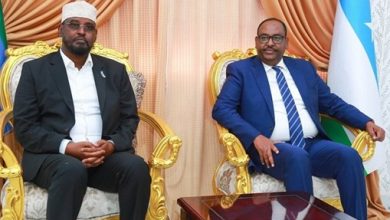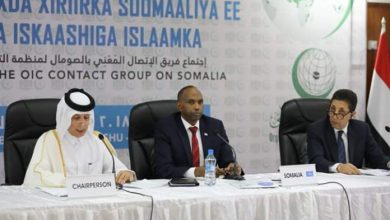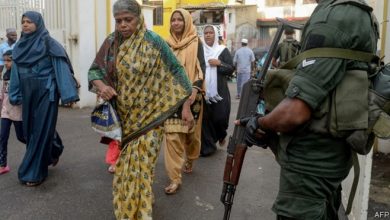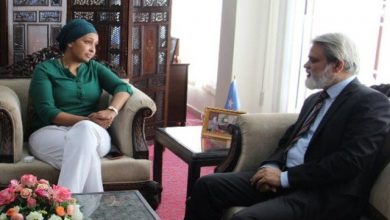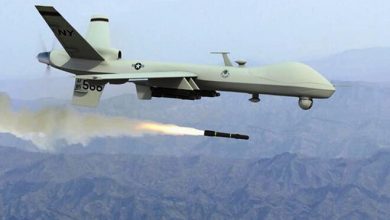Somalia connection in sugar smuggling syndicate revealed
Somalia connection in sugar smuggling syndicate revealed
The sugar wars that are threatening to unravel the Jubilee ruling coalition have focused mostly on the product that is imported by scores of licensed traders.
But, unknown to many Kenyans, a significant amount of sugar consumed in the country is contraband Brazilian product imported via the Kismayu port and smuggled in through the porous Somalia border.
A study by a Danish think-tank shows how political, business, bureaucratic and security interests in Somalia and Kenya are fuelling the smuggling that threatens the country’s political and economic stability.
It describes the smuggling as a “dangerous, lucrative and highly political business.’’
It names a former governor and a leading politician from northern Kenya as some of the top politicians involved in the trade.
There are at least 70 businessmen in Kismayu, Garissa and Nairobi who operate lucrative rings that earn them millions of dollars a year.
In contrast to the sugar that comes in through Mombasa, which is imported by licensed traders, the one from Somalia is contraband and is mostly from Brazil.
The smugglers have hundreds of trucks that operate between Garissa and Kismayu.
On their way to Kismayu, they carry Kenyan food and consumer goods and, on their way back, they are loaded with hundreds of bags of contraband sugar.
The researchers spoke to a number of truck drivers on the frontline of the smuggling.
The study says the Kenyan military, its Somali allies and Al-Shabaab militants are cooperating on the trade in a move that has serious security consequences for both Kenya and Somalia.
The government is denied hundreds of millions of shillings in taxes yet some of its agencies, including the military, police and KRA, are involved in unofficial taxation of the trade.
From Kismayu, which has been under the control of the Kenya Defence Forces since 2012, the sugar passes through Al-Shabaab controlled territory to Garissa and Nairobi where it is repackaged and sold as a local product.
There is also a big market of the commodity in northeastern, especially in refugee camps, the study reveals.
Sugar trade has of late become a political hot potato with accusations that some traders imported the product laced with mercury.
Some 1.2 million bags of sugar have been seized by police in Nairobi, Kitui, Machakos and Migori in the past fortnight.
Senior officials of the Kenya Bureau of Standards, including former managing director Charles Ongwae, have been charged with allowing the sugar into the country.
The crackdown has turned into a face-off between the two wings of the ruling Jubilee coalition loyal to President Uhuru Kenyatta and his Deputy William Ruto.
Some in the Ruto faction feel the crackdown has targeted them while leaving out supporters of the President who are also sugar importers.
Last week, National Assembly Majority Leader Aden Duale, a leading ally of the DP, accused the government of targeting small Somali sugar sellers instead of going for big importers.
He named godowns in Nakuru and western Kenya he said were full of imported sugar.
And this week, Aldai MP Cornelly Serem named the President’s brother, Muhoho, as one of the importers.
Prof Rasmussen’s study was funded by the Danish Consultative Research Committee for Development (FFU) and published by the Danish Institute for International Studies and Centre for African Economics.
“Sugar smuggling in northern Kenya is informed by decades of political marginalisation of the northern territories by the Kenyan central government. Corruption and structural neglect of domestic sugar production in western Kenya is also influenced by struggles over political power in Nairobi,” the study says.
Before KDF took control of Kismayu, al-Shabaab’s main income came from charcoal. But this has since shifted to sugar as it has become easier for them to control the transportation and levying of taxes along the route from Kismayu into Kenya.
Although KDF has been criticised for enabling the trade, the study also targets the political and business interests that fuel the trade in Somalia and northern Kenya as political elites rely heavily on the conflict economy to establish and maintain power.
In 2015, the Journalists For Justice lobby group published a research report in which it said 150,000 tonnes of illegal sugar entered Kenya from Kismayu in 2014.
This amounts to $400 million (Sh40 billion) worth of annual revenue divided between KDF, Al-Shabaab, local businessmen and politicians, as well as police and KRA officials.
In 2014 up to 230 trucks left Kismayu every week, each carrying 14 tonnes of sugar, and even though they are no longer in control of the harbour, al-Shabaab charges $1,000 per truck.
Checkpoints between Kismayu and the Kenyan border are divided between the militants and KDF, where KDF and Somali officials in Jubaland are said to charge a tax of $2 per sack of 50 and sometimes 100 kg.
On the Somali side of the border in Dhobley, the Jubaland administration collects a further tax of $600 per truck.
To cross the border at Liboi truck owners pay another $600 to the KDF and an expected final $600 to the police at the Dadaab refugee camp.
Sugar warehouses are distributed along the route from the border at Liboi all the way to Mandera in the north.
The sugar godowns in Dadaab, El Wak, Modogashe, Habaswein, Wajir, and Mandera each form local distribution points, indicating local demand for sugar.
Although the trade has been in existence for nearly two decades, the rise of Al-Shabaab insurgent group has brought in a new security dimension, the study says.
The trade has also become associated with Kenyan politics in novel ways, as the mismanagement of national sugar production increases the demand for sugar while protectionist trade policies have obstructed sufficient imports.
The Somalia sugar bridges a deficit in Kenyan production.
The study says because the Somali State is all but absent, local politicians, businessmen and militias cooperate, compete, and negotiate the rules of the game.
KDF’s involvement, the study adds, undermines their legitimacy. It also gives the trade an important role in escalating security concerns and instability on both sides of the border.
It is ironical, the study says, that the Kenyan government sets up the rules of taxation and official passage across the border, hence defining illicitness as non-compliance with these rules.
Yet the active involvement of the KDF and other Kenyan state agencies in the illicit trade make the Kenyan state a co-producer of illicit practices, thus effectively setting the State against itself.
But at the heart of the contraband sugar imports is Kenya’s inability to be self-sufficient in local production, the paper says.
According to annual reports by the US Department of Agriculture, Kenyan sugar consumption is growing, yet local production is declining.
In 2011 domestic production covered 70 per cent of local consumption, but in 2015 the local share was down to 62 per cent. In 2014, Kenya had a sugar deficit of 200,000 tonnes.
Outdated sugar mills that are closed regularly for maintenance are blamed for the deficit.
Small-scale farmers who supply most of the cane have not been paid for months.
This also applies to other public factories like Nzoia. Private millers like West Kenya have resorted to imports.
Kenya’s sugar processing is slow and expensive, resulting in production costs that are 50 to 60 per cent higher than in neighbouring Uganda and Tanzania, not to mention Ethiopia, which has increased its sugar cane production in recent years as part of government-led agricultural development projects.
In Kenya, Mumias Sugar Company Limited, the largest producer, which accounts for close to 60 per cent of national sugar output, has been wracked by financial irregularities and corruption, repeatedly interrupting production since 2012.
These irregularities and the high production costs of Kenyan sugar meant that locally milled sugar in 2014 sold for up to Sh133 a kilo, whereas smuggled sugar went for as little as Sh60 a kilo.
With these price differences in mind it is easy to see the potential for profit in repackaging and selling smuggled sugar as if it were local sugar, the study says.
The sugar importers are so powerful and dangerous that even government officials are forced to play ball.
The Dadaab refugee camp, close to Garissa in northern Kenya, is one of the major hubs for the trade with hundreds of thousands of clients.
The report cites a 2014 incident in which a police officer was shot dead in the camp when he acted against the advice of his sugar patron, an influential local politician.
Officially, his killing was blamed on Al-Shabaab. The report also quotes a regional commissioner newly posted to the area narrating how he was threatened by a sugar trader who visited him in his office.
“If he was unwilling to cooperate, the businessman pointed out that the commissioner had three options; either to seek transfer of placement by himself, to have the businessman take care of his transfer or to never return to his family. Such blunt intimidation testifies to the power and connectedness of the people involved in the smuggling.’’
KDF’s implicit support or acceptance of Al-Shabaab’s huge profits from the trade, the study says, goes directly against the official security interests of the Kenyan state and produces incentives for local politicians to keep the conflict going.
On April 2, 2015, when al-Shabaab attacked Garissa University College, killing 148 people mostly students, the government announced it had frozen the accounts of 86 companies it said supported the militants.
Nation investigations at the time revealed that none of the sugar barons were named in the list of 86 companies and individuals.
Reports by the United Nations and a US government agency say there are about 70 businessmen — in Kismayu, Garissa and Nairobi — who are brokers in the sugar trade.
According to a report prepared jointly by the United Nations Environmental Programme (Unep) and Interpol, Al-Shabaab’s primary source of income appears to be from informal taxation at roadblocks.
The report said the militants make as much as Sh1.5 billion a year from just one roadblock.
“There are five checkpoints between Kismayu and Garissa — three by Al-Shabaab and two by the KDF. The sugar trucks are waved through all the checkpoints without checks,” said a source. Kenya’s military chiefs have previously denied allegations of involvement in any illicit activity in Somalia.
